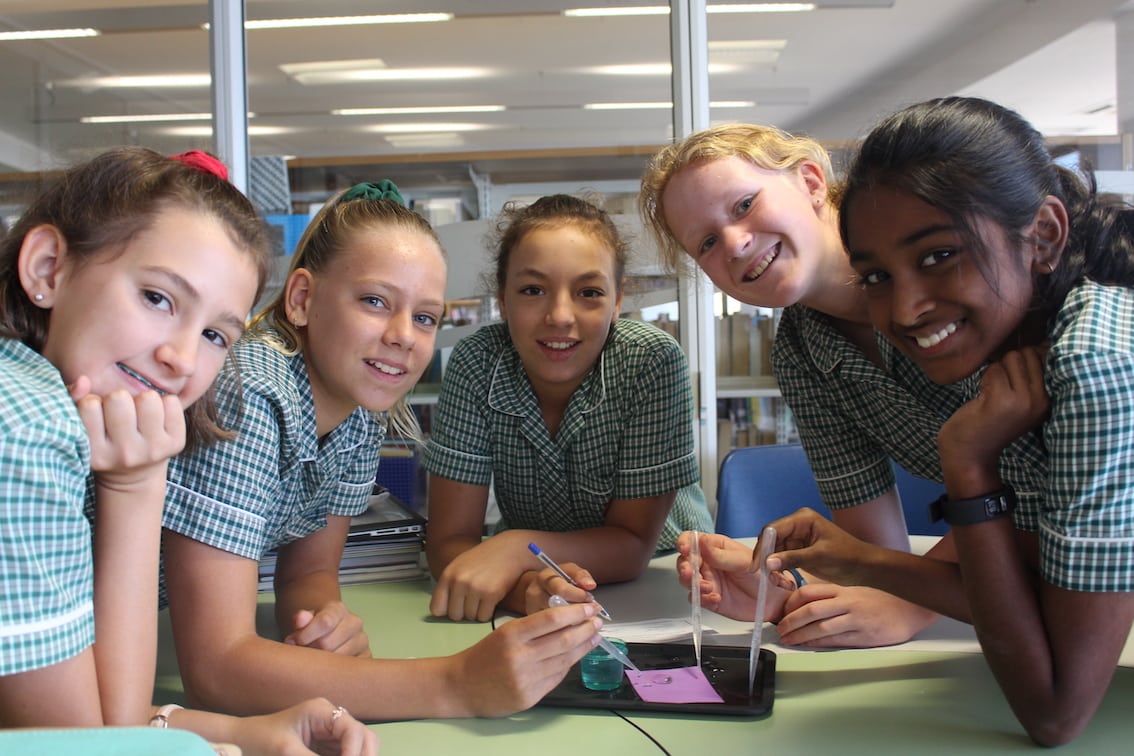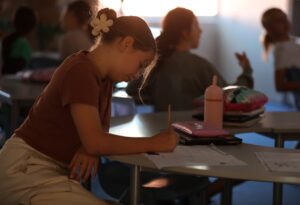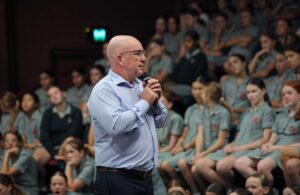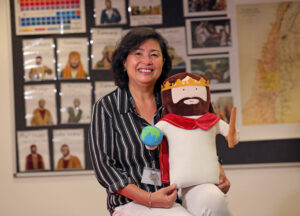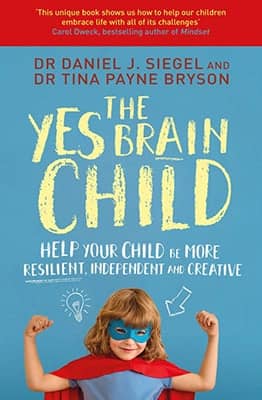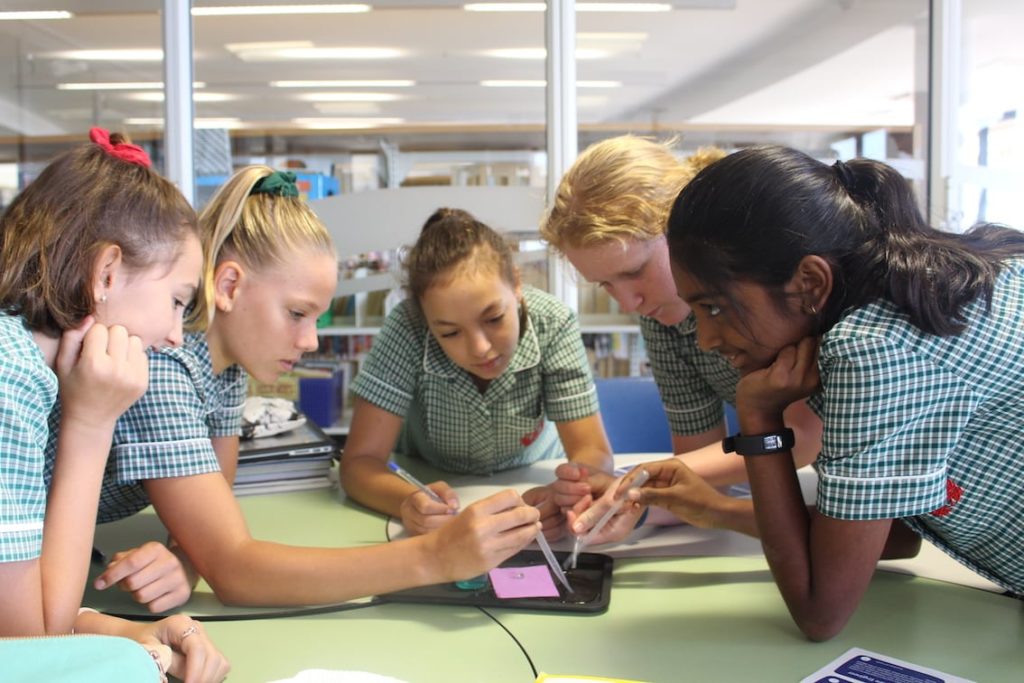 Are you aware of what biomimicry is? The Year 7 girls in our new elective, STENgineers found out what it was when UWA’s Girls in Engineering ran a series of workshops at the College this term. Biomimicry is technologies inspired by nature. The girls experimented with paint that mimicked the texture of shark skin which helps to reduce the drag on planes and vehicles and gecko tape that mimics the texture and composition of gecko feet.
Are you aware of what biomimicry is? The Year 7 girls in our new elective, STENgineers found out what it was when UWA’s Girls in Engineering ran a series of workshops at the College this term. Biomimicry is technologies inspired by nature. The girls experimented with paint that mimicked the texture of shark skin which helps to reduce the drag on planes and vehicles and gecko tape that mimics the texture and composition of gecko feet.
With the problem-solving skills the girls have been developing during the course, they experimented with a biomimicry kit, using hydrophobic paper to commence solving problems such as waterproofing clothing for the homeless or collecting water in a drought.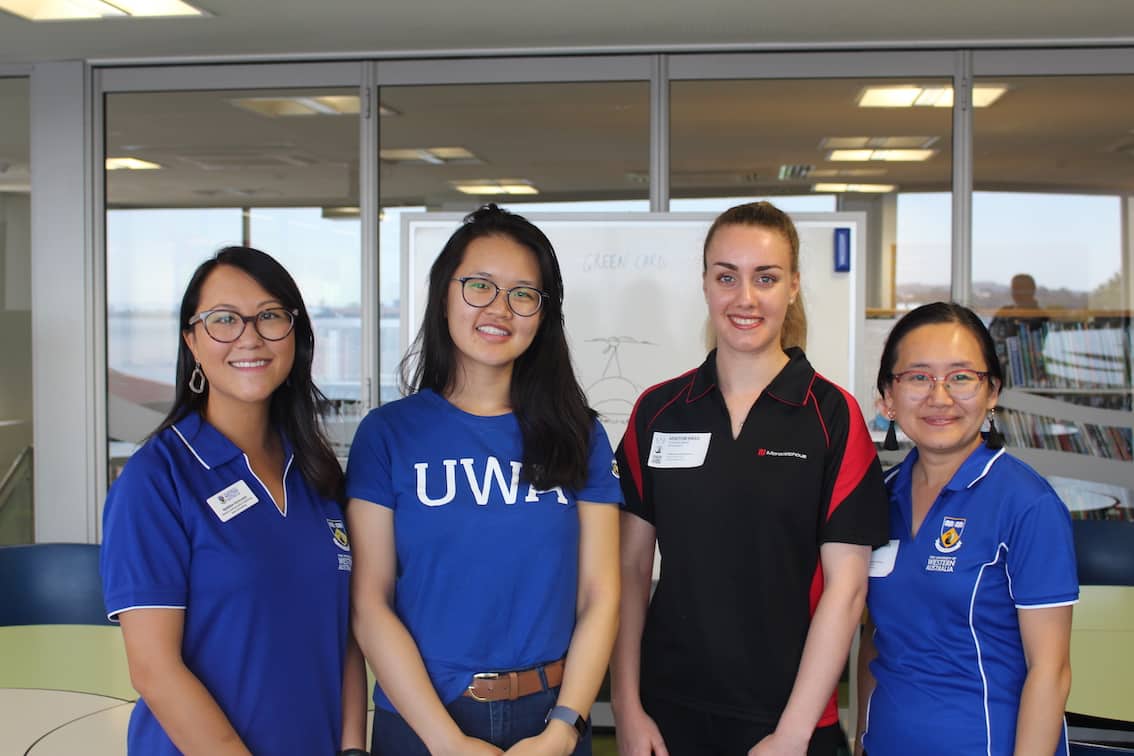 Please share a little about your background and how you came to be involved with the Girls in Engineering program?
Please share a little about your background and how you came to be involved with the Girls in Engineering program?
I graduated from Santa Maria College in 2009 (go de la Hoyde!) and completed my Honours degree in English & Cultural Studies at the University of Western Australia.
In high school, I barely knew anything about engineering (despite my father being an electrical engineer!). It was coming second place in the state for a neuroscience competition, the Brain Bee, that sparked my interest in science. However, at that stage in Year 11, I had already chosen my ATAR subjects that didn’t feature the sciences or higher maths – and ultimately that was the barrier that led me down a different path.
I like to think that my current work in advocating for Science, Technology, Engineering & Mathematics (STEM) is a nice way to be that mentor that I needed back then. Although I’m incredibly happy with how my study and career have turned out, it’s clear to me that simple awareness and support for girls interested in STEM are crucial.
Tell us about the program?
The Girls in Engineering program is an outreach initiative based within the Faculty of Engineering & Mathematical Sciences at the University of Western Australia. It was founded in 2012 with our foundation sponsor, Rio Tinto. We visit schools in the Perth metro area to lead fun and interactive sessions in engineering, as well as bring students to the UWA campus to explore study and careers in STEM. In 2019, we hope to reach nearly 3,000 students in Years 7 – 12!
At each activity, we bring along at least one UWA student and a volunteer from our industry partners, Rio Tinto or Monadelphous, to share their journey and act as a mentor for the next generation of STEM professionals.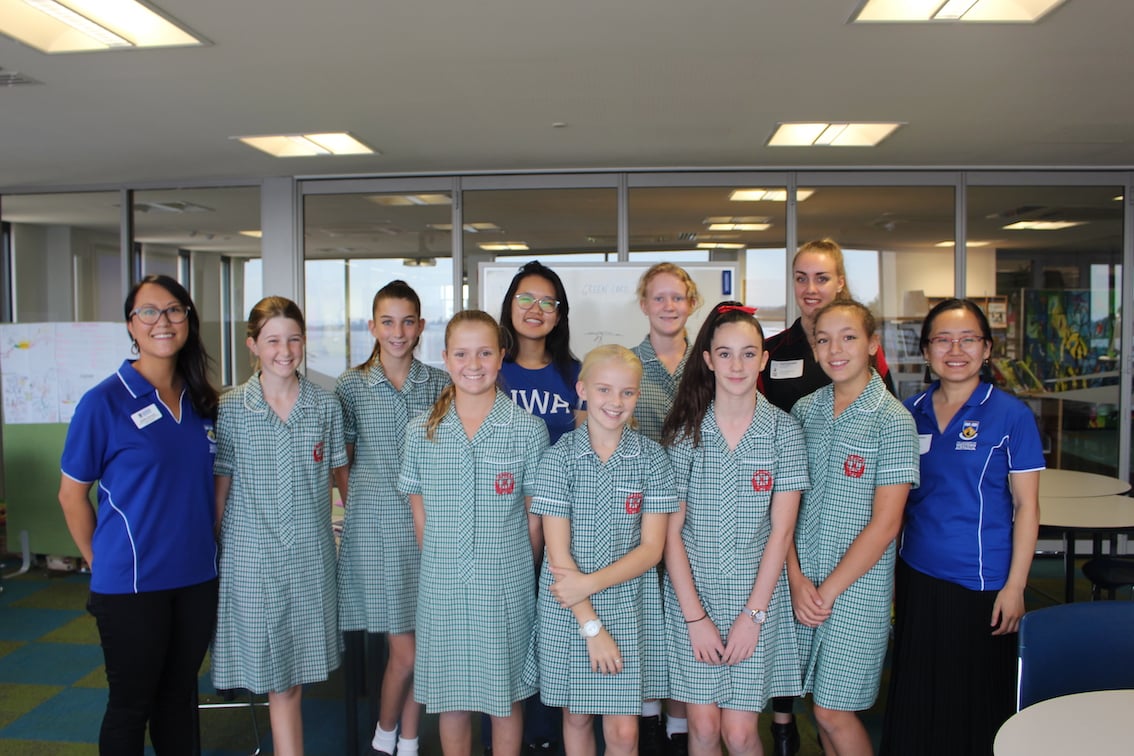 What do the girls learn through this program?
What do the girls learn through this program?
We aim to demystify what engineering really means – rather than simply just ‘fixing things’ or ‘building things’, engineering is about applying our knowledge of science and maths to solve crucial problems in our world. The girls learn about the breadth of fields and what might suit their interests the most, including software, electrical, environmental, biomedical, mechanical, civil, chemical, and mining engineering. They always learn something new – such as how biomedical engineers are 3D printing human organs or creating bionic arms; how mechanical and electronic engineers are making tents for refugees that use solar power for light and to collect and heat rainwater; or how environmental engineers are creating solutions to the plastic waste problem in our oceans.
We always do hands-on activities in teams to show how communication, leadership and critical thinking are essential skills in STEM. We also demonstrate why diverse teams are essential in our future workforce and try to break down unhelpful stereotypes for girls interested in STEM.
GIE facilitated three classes with the Year 7s:
- Engineering Survival Island: a resource management game to optimise resources and make important engineering decisions to run a city
- Mining & Rehabilitation Challenge: a team game to safely extract iron ore from a mine site, and then creatively brainstorm ways to rehabilitate it
- Biomimicry: technology inspired by nature, with a science experiment on surface tension and superhydrophobic technology (waterproofing) to solve problems such as preventing flood damage in third world countries
What outcomes do you hope to achieve?
We hope that the girls come away with an appreciation of how engineering makes our world work, but more importantly how engineers make things better – safer, more efficient, eco-friendly, sustainable, and of course, fun! We also want to create a dialogue about why STEM skills are so crucial in the future of work, and how pursuing science and mathematics can open so many doors in their bright futures. We particularly want students, teachers, and parents to realise that STEM careers are for everyone, regardless of gender or background, and to support their choices in an informed and compassionate way.
It was an absolute joy to come back to Santa Maria College after having graduated 10 years ago – particularly as my first session was held in my old Human Biology classroom in Year 12! The Year 7s were exceptionally bright, well-mannered and enthusiastic. I’d like to thank the teachers at Santa Maria College for making this happen, as well as our sponsors Rio Tinto, Monadelphous and Fluor for supporting our cause.
Year 7 student Anika Zammit said, “This was really fun and interesting, and it taught me a lot of things that I didn’t know.”